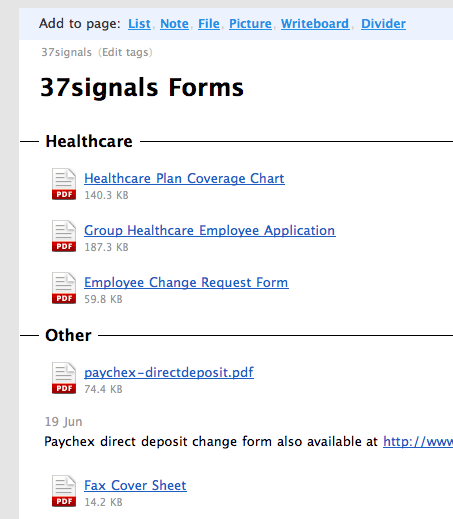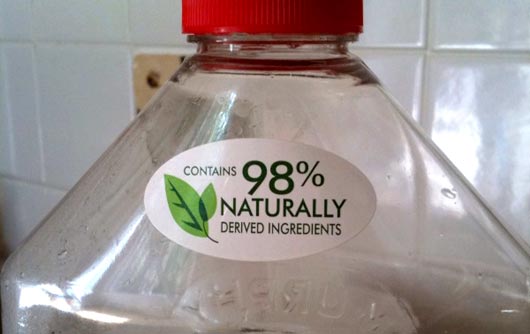
Happy accident: I love how the file size lines up perfectly with the file type in our new file icons in Backpack. (These icons were also added to Basecamp and Highrise today. Campfire soon.)
You’re reading Signal v. Noise, a publication about the web by Basecamp since 1999. Happy !
The advice to forget about megapixels when camera shopping definitely doesn’t apply at the pro end of the spectrum. Photographer Peter Belanger has two amazing posts demonstrating his 60 megapixel Phase One p65+: It’s all about the megapixel and Can you count the bricks?

As seen on a bottle of Murphy Oil Soap. 98% naturally derived ingredients. I don’t even know how to parse that.
Does 98% natural actually matter? It’s still 2% artificial. So if you’re looking for all-natural, does almost-all-natural matter? I suspect almost-all-natural probably sells product, but it feels disingenuous to me.
Further, the “derived” disclaimer sounds like a stretch. Is 98% natural and 98% derived from natural ingredients the same thing? Aren’t most artificial things ultimately derived from naturally occurring ingredients? The distinction hides something they don’t want you to know.
This Murphy bottle sticker is just one example of what I like to call “little green lies” — product packaging and advertising claims that try hard to spin natural stats on unnatural products in their favor.
We’ve just posted another article in our series of Design Explorations. This installment shows our process for redesigning the Edit Contacts screen in Highrise.
We love to write about design and enjoy sharing the results. So we’re excited for you to see this peek into our design process.
Need to get some work done? Announce your anti-office hours. “I’ll be offline. SMS if there’s an emergency.”

A thoughtfully worded message pops up after a few minutes of idle time reminding you to set an alternate email address in case you lose access to your Gmail account.
Over the past few months I’ve developed some icons for use on our marketing sites and newsletters. A few of these icons have made it into production. Some are simple and some are detailed. Most haven’t seen the light of day just because they weren’t a right fit for what we were trying to communicate at the time.
I want to release the artwork for these icons as open source. They’re free for you to use and (hopefully) improve upon. I hope that you’ll find these useful for any web or print design projects that you’re working on. All you need to get started is a vector illustration program that can open up an EPS file.
Updated: This artwork is released under the CC0 1.0 Universal license and the WTFPL. Can’t believe it’s this hard to give stuff away!
New page on the 37signals site: Featured Presentations, Keynotes, and Interviews. Lots of embedded videos and links to audio interviews there.
Want 37signals to speak at your conference, seminar, or event? Get in touch.
By far the dominant reason for not releasing sooner was a reluctance to trade the dream of success for the reality of feedback.
We rely way too much on averages to run our business. We have our average response time, our average conversion rate, our average lifetime value per customer, and a thousand other averages.
The problem with averages are that they tell you nothing about the actual incidents and often gives you a misleading big picture.
Our average response time for Basecamp right now is 87ms, says New Relic. That sounds fantastic, doesn’t it? And it easily leads you to believe that all is well and that we wouldn’t need to spend any more time optimizing performance.
Wrong. That average number is completely skewed by tons of super fast responses to feed requests and other cached replies. If you have 1000 requests that return in 5ms, then you can have 200 requests taking 2,000 ms and still get a respectable 170ms average. Useless.
What we need instead are histograms. That way you can pick off clusters much easier and decide whether you want to deal with them or not. Outliers are given a more appropriate weight and you’re more likely to make good decisions from the data.
P.S.: Listing the standard deviation helps very little when there’s great variability. When some of your requests take 5ms and others take 5,000ms, the standard deviation is not of much use.